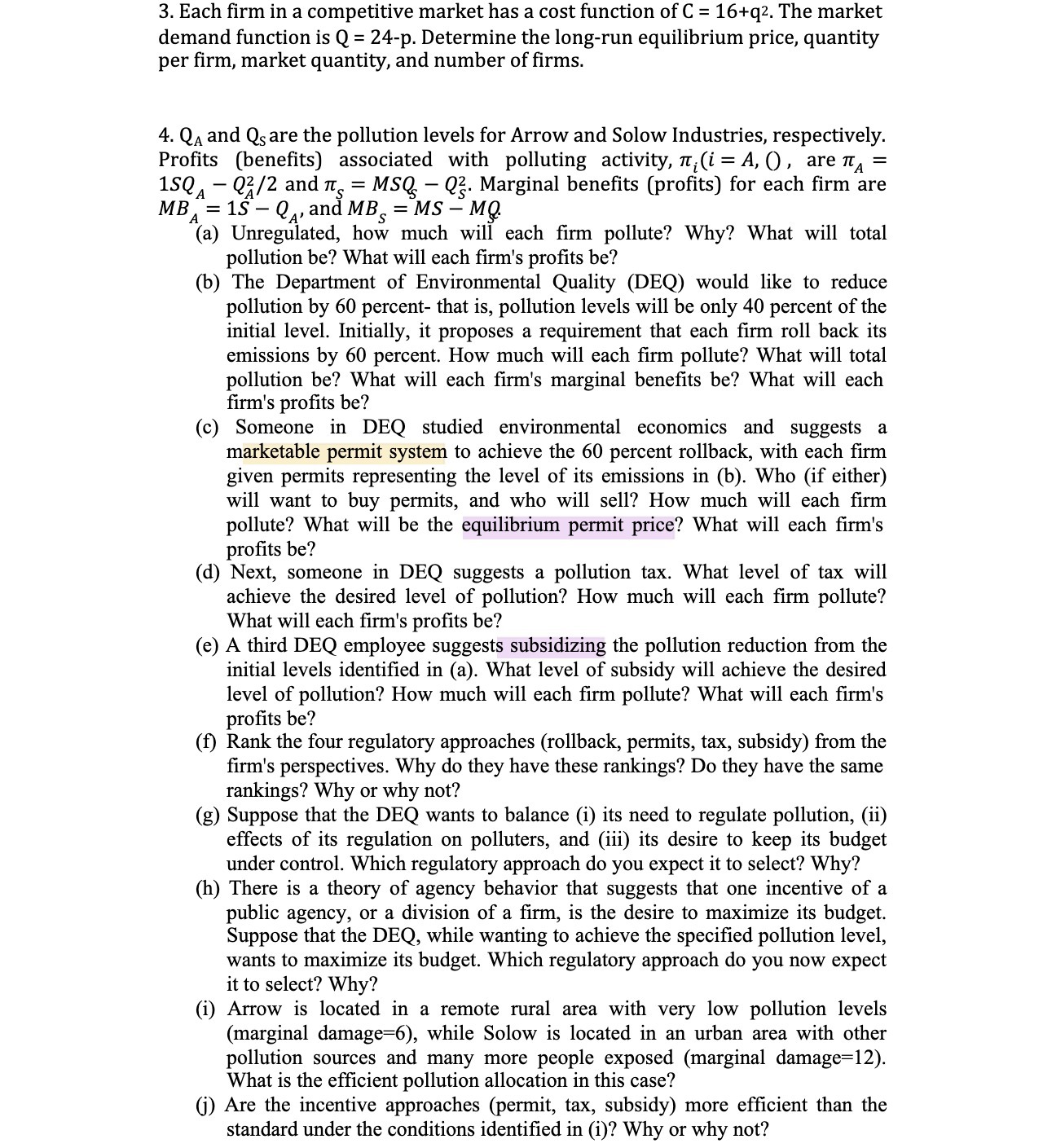3. Each rm in a competitive market has a cost function of C = 16+q2. The market demand function is Q = 24-p. Determine the long-run equilibrium price, quantity per rm, market quantity, and number of rms. 4. Q A and Q5 are the pollution levels for Arrow and Solow Industries, respectively. Profits [benets] associated with polluting activity, rri(i = A, O , are 'A = 13Q',l 03/2 and 115 = Msg Qg. Marginal benets (prots) for each rm are MBA,1 = 15' Q ,andMBS =MSM9 (a) Unregulated, how much will each rm pollute? Why? What will total pollution be? What will each rm's prots be? (b) The Department of Environmental Quality (DEQ) would like to reduce pollution by 60 percent- that is, pollution levels will be only 40 percent of the initial level. Initially, it proposes a requirement that each rm roll back its emissions by 60 percent. How much will each rm pollute? What will total pollution be? What will each fn'm's marginal benets be? What will each rm's prots be? (c) Someone in DEQ studied environmental economics and suggests a marketable permit system to achieve the 60 percent rollback, with each rm given permits representing the level of its emissions in (b). Who (if either) will want to buy permits, and who will sell? How much will each rm pollute? What will be the equilibrium permit price? What will each rm's prots be? (d) Next, someone in DEQ suggests a pollution tax. What level of tax will achieve the desired level of pollution? How much will each rm pollute? What will each rm's prots be? (e) A third DEQ employee suggests subsidizing the pollution reduction from the initial levels identied in (a). What level of subsidy will achieve the desired level of pollution? How much will each rm pollute? What will each rm's prots be? (t) Rank the four regulatory approaches (rollback, permits, tax, subsidy) from the rm's perspectives. Why do they have these rankings? Do they have the same rankings? Why or why not? (g) Suppose that the DEQ wants to balance (i) its need to regulate pollution, (ii) effects of its regulation on polluters, and (iii) its desire to keep its budget under control. Which regulatory approach do you expect it to select? Why? (h) There is a theory of agency behavior that suggests that one incentive of a public agency, or a division of a rm, is the desire to maximize its budget. Suppose that the DEQ, while wanting to achieve the specied pollution level, Wants to maximize its budget. Which regulatory approach do you now expect it to select? Why? (i) Arrow is located in a remote rural area with very low pollution levels (marginal damage=6), while Solow is located in an urban area with other pollution sources and many more people exposed (marginal damage=12). What is the efcient pollution allocation in this case? (j) Are the incentive approaches (permit, tax, subsidy) more efcient than the stande under the conditions identied in (i)? Why or why not







